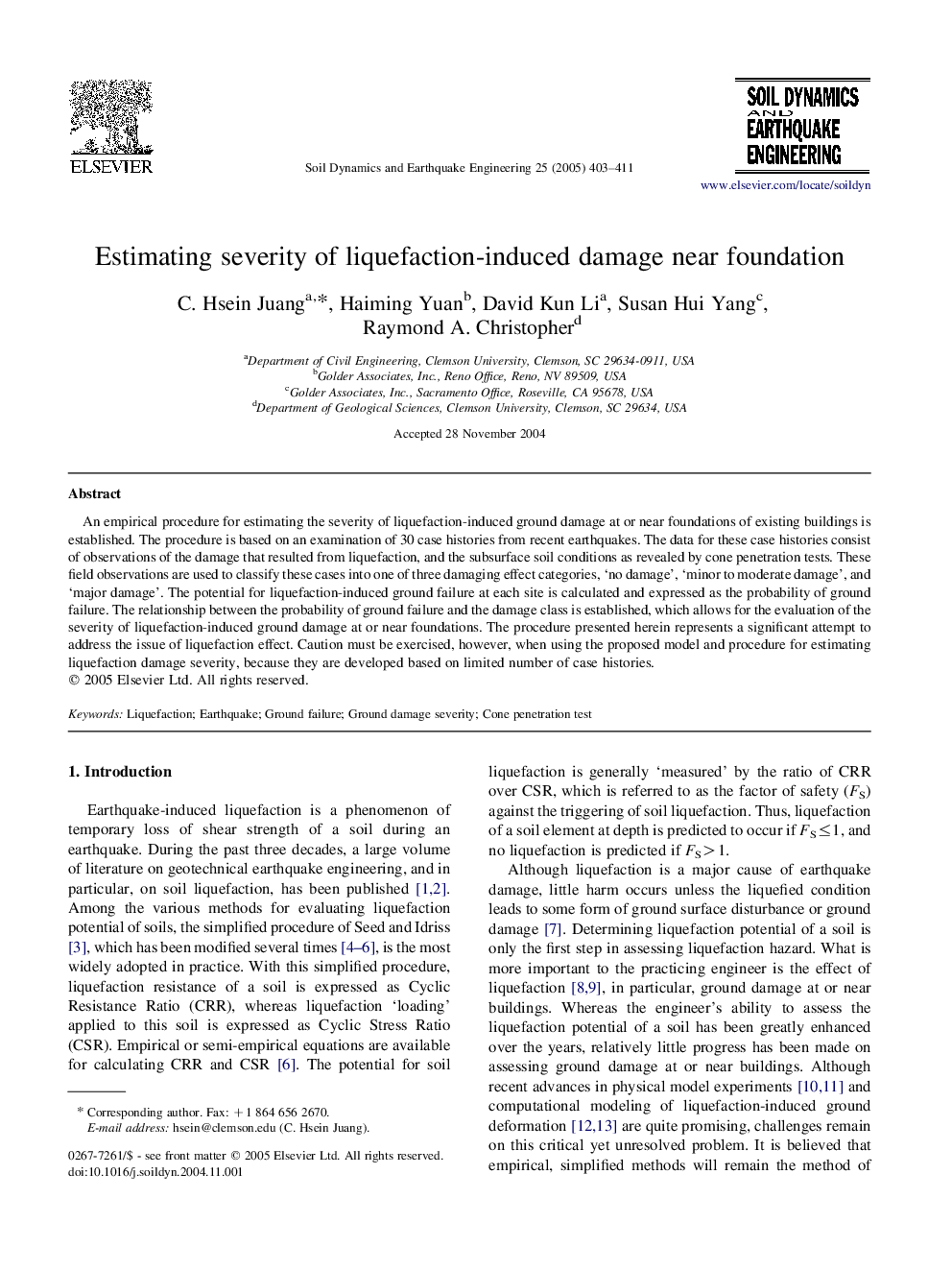| Article ID | Journal | Published Year | Pages | File Type |
|---|---|---|---|---|
| 10295053 | Soil Dynamics and Earthquake Engineering | 2005 | 9 Pages |
Abstract
An empirical procedure for estimating the severity of liquefaction-induced ground damage at or near foundations of existing buildings is established. The procedure is based on an examination of 30 case histories from recent earthquakes. The data for these case histories consist of observations of the damage that resulted from liquefaction, and the subsurface soil conditions as revealed by cone penetration tests. These field observations are used to classify these cases into one of three damaging effect categories, 'no damage', 'minor to moderate damage', and 'major damage'. The potential for liquefaction-induced ground failure at each site is calculated and expressed as the probability of ground failure. The relationship between the probability of ground failure and the damage class is established, which allows for the evaluation of the severity of liquefaction-induced ground damage at or near foundations. The procedure presented herein represents a significant attempt to address the issue of liquefaction effect. Caution must be exercised, however, when using the proposed model and procedure for estimating liquefaction damage severity, because they are developed based on limited number of case histories.
Keywords
Related Topics
Physical Sciences and Engineering
Earth and Planetary Sciences
Geotechnical Engineering and Engineering Geology
Authors
C. Hsein Juang, Haiming Yuan, David Kun Li, Susan Hui Yang, Raymond A. Christopher,
